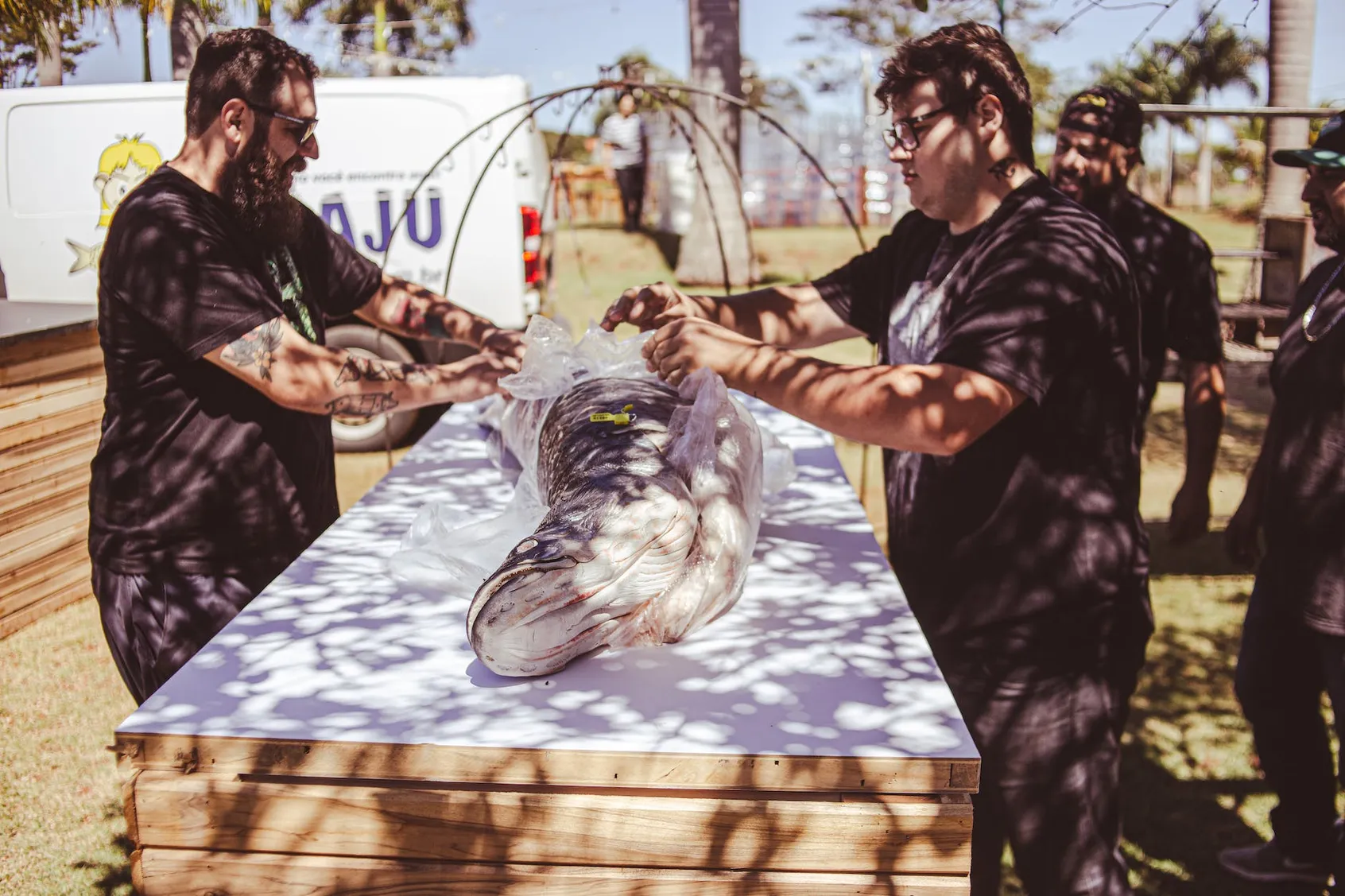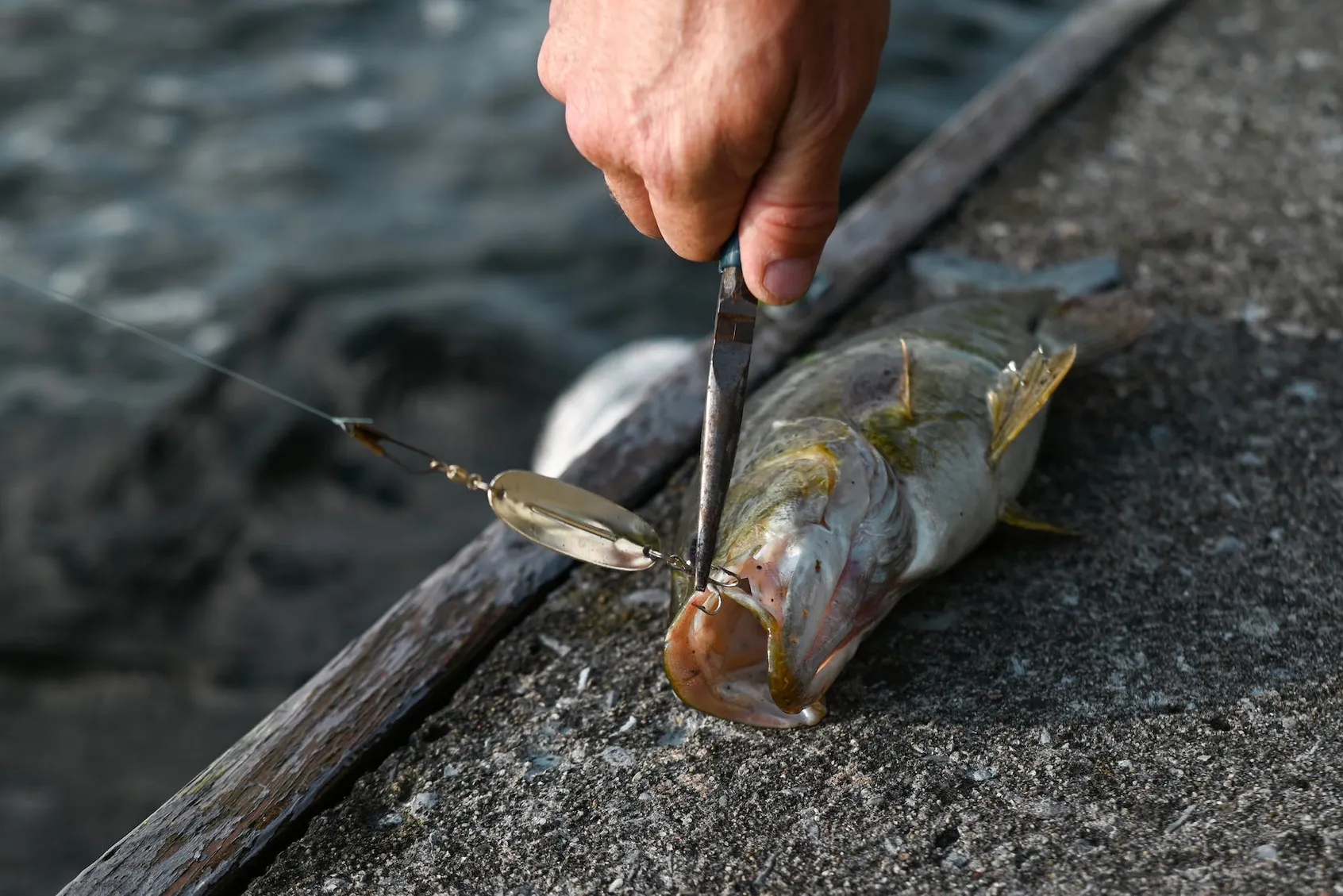Changing a KitchenAid attachment is a simple and easy task. The process is the same whether you are changing a whisk, dough hook, or flat beater. You only need a few basic tools and minutes to quickly and easily remove the attachment.
In this article, we will discuss how to remove KitchenAid attachments easily so you can get back to baking, cooking, or whatever else you had planned.
How To Remove KitchenAid Attachment?
Removing KitchenAid attachments can be a relatively simple task as long as you know the procedure. Most KitchenAid attachments have a release lever or button that allows you to remove them easily.
All you need to do is locate the release lever or button and press it to unlock the attachment from the mixer. Once the attachment is unlocked, you can lift it off the mixer and place it on the counter.
Assuming you have the correct model of KitchenAid attachment, you will want to start by locating the release lever or button. This lever or button is usually located near the base of the attachment. Depending on the model, it may be located on the side, bottom, or top of the attachment. Once you have found the release lever, press it down to unlock the attachment from the mixer.
After the release lever is pressed, you should be able to lift the attachment off of the mixer easily. Be gentle when removing the attachment so you do not damage the mixer or the attachment itself. After removing the attachment, you can place it on the counter or in a safe storage space.
It is also important to note that some KitchenAid attachments require you to unscrew the attachment from the mixer before removing it. If this is the case, always tighten the screws after the removal process is completed securely. This will ensure the attachment is locked and secure when ready to use it again.
Removing KitchenAid attachments is a relatively easy task, but it is important to take the time to follow the correct procedure. With the right knowledge, you can easily remove any KitchenAid attachment quickly.

What Types Of KitchenAid Attachments Are Available?
Various KitchenAid attachments are available to help make your kitchen tasks easier and more efficient. Some of these attachments include:
- Pasta attachments: these attachments make it easier to create homemade pasta.
- Food grinder and sausage stuffer attachments allow you to easily grind meat and stuff sausages.
- Juicer attachment: with this attachment, you can create fresh juices with your KitchenAid mixer.
- Grain mill attachment: this attachment allows you to grind your grains for baking and cooking.
- Ice cream maker attachment: you can easily make homemade ice cream right at home.
- Blender attachment: this attachment allows you to mix ingredients in your KitchenAid mixer.
- Slicer and shredder attachments: these attachments make it easy to slice or shred vegetables and cheese.
How To Select The Right KitchenAid Attachment For Your Kitchen?
Selecting the right KitchenAid attachment can be overwhelming, given the many options available. Here are some tips to help you choose the right attachment for your kitchen needs:
- Determine your cooking needs – Think about what you cook most frequently and what kitchen tasks you perform regularly. This will help you narrow your search and choose attachments that best suit your needs.
- Consider your existing KitchenAid mixer – Different attachments work best with different models of KitchenAid mixers. Ensure you check your mixer’s compatibility with the attachments you’re interested in.
- Research online – Browse KitchenAid’s website to explore the range of attachments available and read reviews from other customers. You can also look for independent product reviews to understand each attachment’s performance better.
- Prioritize versatility – Many attachments can be used for multiple tasks, so prioritize attachments that offer versatility. For example, the pasta attachment can be used for various types of pasta, and the meat grinder attachment can be used to grind spices and vegetables.
- Consider your budget – KitchenAid attachments come in various prices, so consider your budget. Choose attachments that offer the most value for your money, and make sure you consider the long-term use of the attachment.
How To Clean And Store KitchenAid Attachments?
Cleaning and storing your KitchenAid attachments properly is essential to maintaining quality and longevity. Here are some tips to ensure that your attachments are clean and ready to use whenever you need them:
- Always unplug your mixer before cleaning any attachments.
- most KitchenAid attachments can be hand washed with warm, soapy water after each use. Avoid using abrasive sponges or harsh cleaning agents that could damage your attachments.
- If your attachments are dishwasher safe, place them in the dishwasher for a thorough cleaning. Check your specific model’s user manual to confirm whether or not your attachments are dishwasher safe.
- After cleaning, ensure your attachments are completely dry before being put away. Using a clean, dry towel to dry them off is a good way to ensure no moisture is left behind.
- When storing your attachments, avoid stacking them on top of each other, as this could cause damage to the individual pieces. Instead, store them in a designated drawer or cabinet where they can be easily accessed.
What Are The Benefits Of Using KitchenAid Attachments?
There are many benefits to using KitchenAid attachments to help you with your kitchen tasks. Here are a few key advantages:
- Versatility – KitchenAid attachments are designed to work with multiple KitchenAid stand mixers to perform various tasks with just one appliance. You can easily change out attachments to suit your cooking needs.
- Convenience – With KitchenAid attachments, you can save time and effort on food preparation tasks such as slicing, dicing, and grating. Many attachments are also easy to clean and store.
- Quality – KitchenAid is known for producing high-quality appliances; their attachments are no exception. You can rest assured that you are getting durable, reliable products lasting years.
- Creativity – KitchenAid attachments can open up a world of culinary creativity. Attachments like the pasta roller, ice cream maker, and food processor allow you to create various dishes and experiment with new recipes.

How To Properly Install A KitchenAid Attachment?
Installing a KitchenAid attachment is simple and can be done in just a few steps. Here’s how to do it properly:
- Turn off and unplug your KitchenAid stand mixer. This is an important safety precaution.
- Make sure the attachment you want to install is correct for your mixer. Check the user manual or the KitchenAid website to double-check compatibility.
- Locate the power hub on your KitchenAid mixer. This is the spot on the front of the machine where attachments are inserted.
- Align the attachment shaft with the power hub, then push the attachment up into place until you feel it lock securely. You may need to twist the attachment slightly to line it up correctly.
- Turn on the mixer to test the attachment. Make sure it’s working properly before you start using it.
What Safety Precautions Should Be Taken When Using KitchenAid Attachments?
When using KitchenAid attachments, it’s important to take certain safety precautions to prevent accidents and injuries. Here are a few tips to keep in mind:
- Read the instructions carefully before using any attachments, and follow them closely.
- Make sure the attachment is securely fastened to the mixer before turning it on.
- Always use the appropriate speed for your task and start at a low speed to prevent splatters or spills.
- Keep your hands and fingers away from moving parts and blades while the mixer is on.
- Never overload the mixer or the attachment with too much food or ingredients.
- Always unplug the mixer before attaching or removing any accessories or attachments.
What Accessories Complement KitchenAid Attachments?
Many accessories can complement KitchenAid attachments and improve your baking and cooking experience. Here are a few ideas to get you started:
- A stand mixer cover: Protect your KitchenAid mixer from dust, scratches, and other damage with a stylish and durable cover.
- Extra mixing bowls: Extra mixing bowls can come in handy when you’re working on multiple recipes or want to avoid washing your bowl between different recipe steps.
- Spatulas and scrapers: A good set of spatulas and scrapers can get every last bit of batter or dough out of your KitchenAid attachments, ensuring that none of your ingredients go to waste.
- Pasta drying rack: If you love making fresh pasta with your KitchenAid pasta attachment, a pasta drying rack can be a great investment. It allows your pasta to air dry evenly, ensuring it doesn’t clump together.
- Meat grinder accessories: If you frequently use your KitchenAid meat grinder attachment, consider investing in accessories like sausage stuffing tubes or grinding plates of different sizes to expand your culinary possibilities.
How To Troubleshoot Common Issues With KitchenAid Attachments?
If you’re experiencing issues with your KitchenAid attachments, you can try a few troubleshooting steps before purchasing replacement parts or contacting customer service. Here are some common issues and their solutions:
- Attachment Won’t Lock In Place: If your attachment doesn’t lock, ensure it’s compatible with your KitchenAid mixer. Some attachments are designed to be used specifically with certain models. Additionally, check that you’re attaching it correctly. The attachment should slide onto the power hub and twist to lock into place.
- Attachment Won’t Turn: If your attachment doesn’t turn, ensure the mixer is turned off and unplugged. Then try removing and reattaching the attachment, ensuring it’s properly locked. If this doesn’t work, the gears may need to be checked for damage.
- Attachment Leaves Residue in Food: If you find residue in your food after use, ensure the attachment is thoroughly cleaned between uses. Check the instruction manual for specific cleaning instructions, and use the appropriate cleaning tools for the attachment.
- Attachment Makes Strange Noises: If your attachment makes unusual noises while in use, it may be an issue with the gears or the attachment itself. Try removing and reattaching the attachment or inspecting the gears for signs of wear or damage. If the issue persists, you may contact customer service for further assistance.

What Maintenance Tips Should Be Followed For KitchenAid Attachments?
Taking good care of your KitchenAid attachments can help prolong their lifespan and ensure they function properly. Here are a few maintenance tips to follow:
- Clean the attachments after each use. This will prevent food particles from accumulating and potentially causing damage to the attachment. Use mild dish soap and warm water to clean the attachments, and dry them thoroughly before storing them.
- Avoid using abrasive cleaners or harsh chemicals on the attachments. This can damage the surface of the attachment and affect its performance.
- Store the attachments properly. Keep them in a dry, cool place where they won’t get bumped or jostled. Use the storage case that came with the attachments, or consider purchasing a separate storage container specifically designed for KitchenAid attachments.
- Use attachments for their intended purpose only. For example, don’t use a grinder attachment to mix the dough, as this can damage the attachment and potentially cause injury.
How To Find Replacement Parts For KitchenAid Attachments?
When it comes to using KitchenAid attachments, they can be a great way to make various recipes. Unfortunately, these attachments can become damaged or worn over time and must be replaced. If you’re looking for replacement parts for your KitchenAid attachments, there are several options you can choose from.
The first option is to buy a replacement part from the manufacturer. KitchenAid has an official website to purchase replacement parts for their attachments. This is often the easiest and most cost-effective option, as you can be sure you’re getting an authentic part that will fit your appliance.
The second option is to look for replacement parts from other sources. Several online retailers specialize in KitchenAid parts, often offering a wide selection of parts for various KitchenAid attachments. You can find a part that is compatible with your appliance at a lower price than what the manufacturer offers.
The third option is to look for used parts. You may find used KitchenAid parts at thrift stores, garage sales, or other second-hand stores. This can be a great way to save money and find a compatible part with your appliance.
No matter which option you choose, it is important to ensure you buy the correct part for your KitchenAid attachment. Many parts are not interchangeable between different models, so it is important to ensure you get the correct replacement. Additionally, you should always ensure that the part you purchase is in good condition before using it on your appliance.
Can’t Remove Beater From KitchenAid Mixer
If you’re having trouble removing the beater from your KitchenAid mixer, here are a few possible solutions:
- Turn off the mixer and unplug it from the outlet. This is an important safety precaution.
- Try twisting the beater gently from side to side as you lift it. Sometimes it can get stuck in the mixing bowl due to suction, which can help release it.
- If the beater still doesn’t come off, tap it gently with a rubber mallet or a wooden spoon. This can help loosen it from the attachment hub.
- If all else fails, please contact KitchenAid’s customer service for further assistance. They can provide additional tips or help you troubleshoot the issue.
How To Remove Beater From KitchenAid Mixer?
Removing the beater from a KitchenAid mixer is a relatively simple task that can be done in a few easy steps. Before you begin, ensure you have the proper tools, such as a flathead screwdriver and a pair of pliers. Additionally, you should unplug your mixer from the wall before you get started.
To begin, locate the two screws on the back of the mixer. These screws are often located near the top of the mixer and can be easily identified by the two Philips screws. Using the flathead screwdriver, remove the screws, being careful not to strip the screws.
Once the screws have been removed, you should see the beater assembly attached to the mixer. To remove the beater, start by squeezing the clamp at the base with the pliers. Once the clamp has been loosened, the beater will be easy to remove.
Now, lift the beater attachment off the mixer and set it aside. Ensure you don’t lose the pin that holds the beater in place. Carefully remove the pin before attempting to install a new beater.
Finally, if you need to install a new beater, simply insert the pin, slide it onto the mixer, and secure it with the clamp. Once the clamp is in place, replace the two screws, and your KitchenAid mixer is ready to use.
How To Change KitchenAid Mixer Attachments?
Changing KitchenAid mixer attachments is a simple process that can be done in a few easy steps:
- Ensure your mixer is turned off and unplugged before changing attachments.
- Remove any currently used attachments by pressing the release button on the side of the mixer head.
- Choose the attachment you want to replace and insert it into the attachment hub of the mixer. Make sure the attachment is securely in place by turning it clockwise and feeling a click.
- To remove the attachment, turn it counterclockwise and gently pull it away from the mixer. Be careful not to yank or force the attachment, as it could damage the mixer.
- Finally, store your attachments safely and keep them clean and dry between uses.
How To Remove KitchenAid Paddle Attachment?
Removing a KitchenAid paddle attachment can be intimidating, but it can be accomplished easily with the right tools and a little patience. The KitchenAid paddle attachment is a great tool for mixing and stirring ingredients, but over time it can become worn and needs to be replaced. Fortunately, removing the paddle attachment is not difficult and can be completed in a few easy steps.
First, you will need to unplug the KitchenAid mixer from the wall. This is an important step for safety, as you don’t want to leave the mixer plugged in while working on it. Once you’ve done that, you can turn the mixer on its side. It’s important to make sure the paddle attachment is facing up. You’ll then want to locate the attachment’s locking pin, a small metal pin on the bottom side of the mixer.
Next, you’ll need to use a flathead screwdriver to carefully pry the locking pin out of the mixer. It may take a few tries, as the pin can be tight. Once the pin is removed, the paddle attachment should be free to remove. Simply lift the attachment off of the mixer, and it should come free.
Finally, you’ll want to inspect the paddle attachment to ensure it’s in good working order. If there are any problems, such as broken pieces or worn parts, it’s best to replace the attachment with a new one. Once you’ve done that, you can reinstall the paddle attachment by reversing the steps you used to remove it. Ensure the locking pin is securely placed before plugging the mixer back in.
Conclusion
In conclusion, removing a KitchenAid attachment is a relatively straightforward task. With the right tools and patience, any attachment can be easily removed. Following the steps outlined above, you can quickly and safely remove any KitchenAid attachment. Doing so will help ensure that your KitchenAid mixer can function optimally.
Frequently Asked Questions:
How do I change my KitchenAid attachment?
To change the attachment for your KitchenAid mixer, first, unplug the mixer from the power outlet. Then, locate the attachment hub on the front of the mixer, and twist the counter-clockwise to remove it. Insert the new attachment into the hub, and twist it clockwise to secure it. Finally, plug the mixer back into the power outlet, and you’re ready to use the new attachment.
How do I remove the beater attachment from the KitchenAid mixer?
First, remove the beater attachment from a KitchenAid mixer, turn it off, and unplug it. Then, hold the attachment handle and press the beater ejector button on the front of the mixer. This should release the beater attachment, allowing you to get it off the mixer.
How do you remove attachments from a hand mixer?
First, unplug the mixer from the power source to remove attachments from a hand mixer. Then, use the eject button if the mixer has one, or use a flathead screwdriver to loosen and remove the attachment screws. Finally, gently pull the attachment away from the mixer.
What is the best way to store a KitchenAid attachment?
The best way to store a KitchenAid attachment is to keep it in a dry, cool place, such as a cupboard or drawer. Ensure it is stored away from heat sources, such as a stove. Keeping the attachments clean and dry is also important to ensure they last a long time.
How do I know which KitchenAid attachment is compatible with my mixer?
The best way to determine which KitchenAid attachments are compatible with your mixer is to consult the KitchenAid website. On the website, you can view the product details for each mixer and attachment and check to see if the attachment is compatible with your specific model. You can also refer to the user manual for your mixer for more information.
What should I do if my KitchenAid attachment is stuck on my mixer?
If your KitchenAid attachment is stuck on your mixer, you should loosen it by gently wiggling and pulling it off. If that does not work, you may need to use a small flathead screwdriver to pry it off gently. If something other than these methods works, you may need to contact KitchenAid customer service for further assistance.
Is it possible to replace a lost KitchenAid attachment?
Yes, it is possible to replace a lost KitchenAid attachment. You can purchase a replacement part directly from the KitchenAid website or a local retailer.
